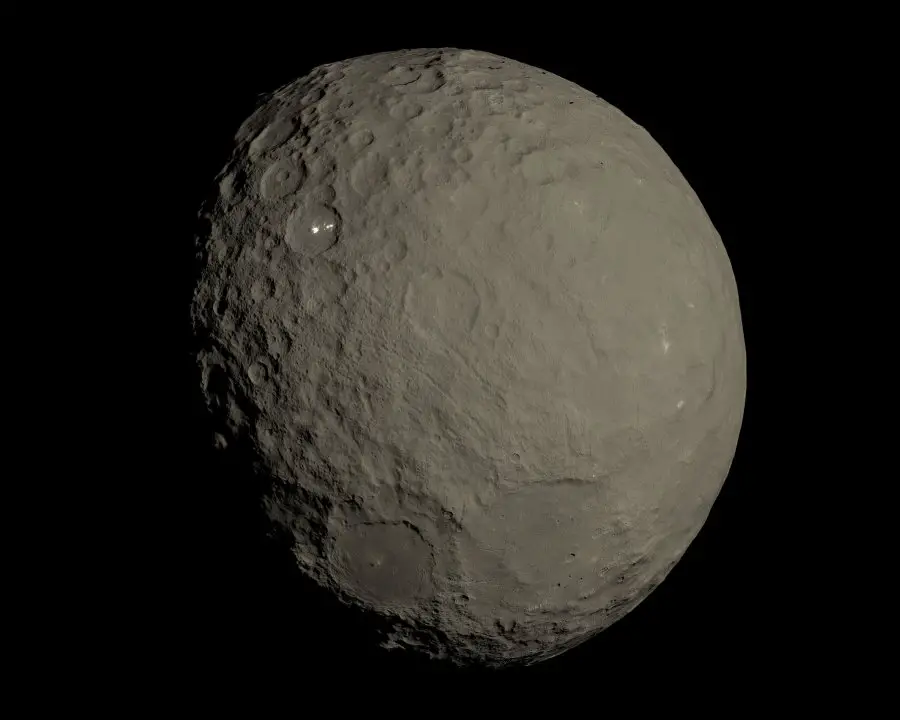NASA Mission Finds Dwarf Planet Ceres Is An “Ocean World” With Salty Water Under Its Surface
Tags: News

Ceres, situated between Mars and Jupiter, has a large reservoir of salty water trapped beneath its frigid surface, scientists have recently announced.
And of course where there’s water, there’s the possibility of life, or at least of microbial life.
The findings, published earlier this week, were based on a 2018 NASA mission, when the Dawn spacecraft flew within 35km of Ceres.
Included in the discovery was the evidence of geologically active cryovolcanism; volcanoes that ooze an icy substance.
Also confirmed was a reservoir of brine – salty water. This is believed to be the remnants of a subsurface ocean which has gradually been freezing over.
‘Liquid on a large scale’ on Ceres
“In the case of Ceres, we know the liquid reservoir is regional scale but we cannot tell for sure that it is global. However, what matters most is that there is liquid on a large scale,” said Dawn principal investigator Carol Raymond.
Ms Raymond also said that the findings elevate Ceres to an ‘ocean world’ status.
Ceres is tiny by comparison to other planets, only 950km in diameter. The dwarf planet is the largest object in the main asteroid belt lying between the Mars and Jupiter orbits.
The scientists were focusing on a specific area – the 90km wide Occator Crater. Formed by an impact about 22 million years ago, the area showed salt crusts. These are from a liquid which has bubbled up to the surface.
The scientists have concluded that the liquid came from a brine reservoir about 40km below the surface. They will continue to study the possibility of life forms existing.
Subsurface oceans can also be found on Saturn’s moon Enceladus, Jupiter’s moon Europa, Neptune’s moon Triton and the dwarf planet Pluto.
Read more: SCIENTISTS DISCOVERED A TINY RELATIVE OF DINOSAURS AND PTEROSAURS
Image Credit: Diego Barucco
Leave Comment: